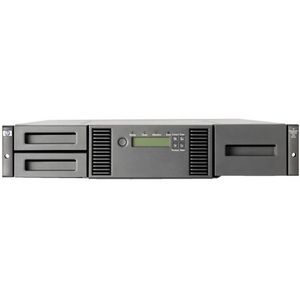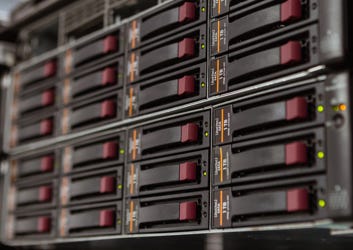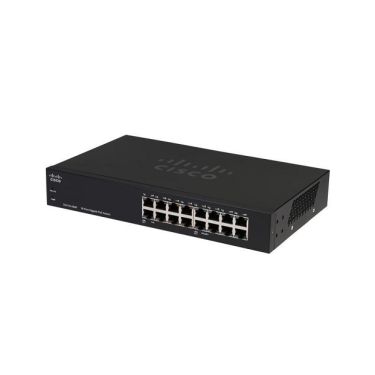Building a Home Office PC? Don’t Overlook These Storage Essentials

Setting up a dedicated home office PC has become increasingly common, especially with the rise of remote work and freelance opportunities. Whether you’re a content creator, a developer, or an entrepreneur managing a small business, having a powerful, reliable, and efficient setup can significantly enhance productivity. However, when planning a build, people often focus on components like the CPU, GPU, and memory—frequently overlooking one crucial aspect: storage. At Gracile IT, we know that choosing the right storage options isn’t just about capacity; it’s about optimizing performance, durability, and future scalability. Here’s everything you need to know to ensure your home office PC has the right storage to meet your needs.
1. Understanding Different Types of Storage Devices
Storage is no longer limited to the traditional hard disk drive (HDD). With advancements in technology, you have several options to consider:
-
Hard Disk Drives (HDDs): Known for offering large amounts of storage at affordable prices, HDDs are a great option if you need to store vast amounts of data, like media files or large backups. However, they are generally slower than modern alternatives and can be noisier.
-
Solid State Drives (SSDs): These drives have become standard in many PCs today. SSDs offer faster read and write speeds, significantly boosting load times and overall system responsiveness. They’re a solid choice for primary storage where speed is essential, such as the operating system and frequently used applications.
-
NVMe SSDs: For those looking to maximize speed, NVMe (Non-Volatile Memory Express) drives are ideal. They connect directly to the motherboard via the PCIe slot, providing faster data transfer rates than traditional SSDs. NVMe SSDs are perfect for power users, developers, and anyone who works with large files or needs blazing-fast data access.
Each of these storage types has its strengths and ideal use cases, so a balanced combination can often deliver the best results.
2. Primary vs. Secondary Storage: Finding the Right Mix
A well-organized home office PC typically utilizes multiple storage solutions to maximize efficiency and performance. Here’s a recommended approach:
-
Primary Storage (Fast Access): Using an SSD or NVMe drive as primary storage ensures that your operating system, applications, and frequently accessed files load quickly. This setup can dramatically reduce wait times and improve overall productivity.
-
Secondary Storage (High Capacity): For storing larger, less frequently accessed files, like archived documents or multimedia files, an HDD is a cost-effective option. A hybrid setup that combines SSD/NVMe for speed and HDD for capacity gives you the best of both worlds.
-
Cloud Storage Integration: While cloud storage doesn’t replace internal storage, integrating services like Google Drive, Dropbox, or OneDrive can add a layer of convenience. Cloud storage can allow for easy access to essential files from multiple devices and offers an added level of security.
3. The Importance of Storage Capacity and Scalability
When choosing storage for a home office PC, capacity matters as much as speed. Estimating your storage needs ahead of time will prevent future complications. Think about your work type and data needs:
-
Light Users (Browsing, Word Processing): If you’re only using basic applications, a 256GB SSD for primary storage and a 1TB HDD for secondary storage should be sufficient.
-
Moderate Users (Design, Coding): Consider upgrading to a 512GB or 1TB SSD for faster access to resource-intensive programs. Adding a 2TB HDD can support additional storage requirements.
-
Heavy Users (Media Creation, Data-Intensive Work): Professionals dealing with large files, like video editors or 3D designers, should opt for at least a 1TB NVMe or SSD and potentially multiple 4TB+ HDDs.
Also, it’s essential to consider future scalability. Many modern PC cases and motherboards are designed to accommodate additional drives, allowing you to add more storage as your needs grow. This flexibility ensures that your home office PC remains functional and efficient over time.
4. Data Security and Backup Solutions
For a home office, data security should be a priority. Losing work files can be catastrophic, especially if they are sensitive or irreplaceable. Here are some best practices to keep your data secure:
-
Local Backup Solutions: Using an external HDD or SSD to back up important data regularly can provide peace of mind. Many software tools offer automated backup options, so you don’t have to remember to do it manually.
-
Cloud Backup Solutions: Beyond just storage, cloud backup services provide additional data security by storing your files in offsite locations. Many services encrypt data, offering secure and reliable access from anywhere.
-
RAID Configurations: RAID (Redundant Array of Independent Disks) can offer redundancy and data recovery options. For a home office PC, RAID 1 is a popular option, as it mirrors data across two drives. While this setup doesn’t replace regular backups, it adds another layer of data protection.
5. Enhancing Workflow with External Storage Options
In a home office, an external storage solution is beneficial for transferring files between devices, quick data access, or working on the go. Here are a few external storage options to consider:
-
Portable SSDs: These drives are compact, fast, and increasingly affordable. They’re perfect for professionals who need to transfer files between their home office and other locations quickly.
-
Network-Attached Storage (NAS): If your workflow involves collaboration or if you need to access files from multiple devices within your network, NAS is an excellent solution. It allows centralized file storage and provides access across devices while adding an extra layer of security and organization.
-
USB Flash Drives: While these aren’t typically used for regular backups, they’re still handy for quick, temporary file transfers and are incredibly portable.
6. Evaluating the Right PC Parts for Optimal Performance
When building a home office PC, every component impacts the overall performance. High-speed storage devices work best when paired with compatible and capable components. Ensure that your motherboard supports the latest NVMe and SSD standards and that your power supply can handle the full setup.
At Gracile IT, we understand that building a home office PC requires careful selection of every part. From motherboards to power supplies, every choice influences your system’s functionality, stability, and longevity.
7. Where to Buy Storage Devices for Your Home Office PC
Selecting the right source for your components is crucial, especially for storage. Quality, warranty, and support can vary, so purchasing from trusted vendors ensures you get reliable products. When you buy storage devices, consider factors like brand reputation, warranty terms, and read/write speeds.
Gracile IT offers a range of trusted storage options designed for every type of user. With our expert guidance, you can find the right fit for your specific needs—whether it’s a primary NVMe SSD for high performance or a large-capacity HDD for secure, long-term storage.
Conclusion
When building a home office PC, storage is a foundational element that influences speed, productivity, and data security. By understanding the various storage types, configuring primary and secondary storage effectively, and investing in reliable backup solutions, you can ensure that your system not only meets today’s needs but also supports future growth.
At Gracile IT, our team of experts is here to help you choose the best storage solutions and other PC parts for your home office. We offer high-quality components and tailored advice to make sure your setup is efficient, reliable, and prepared for any workload.




